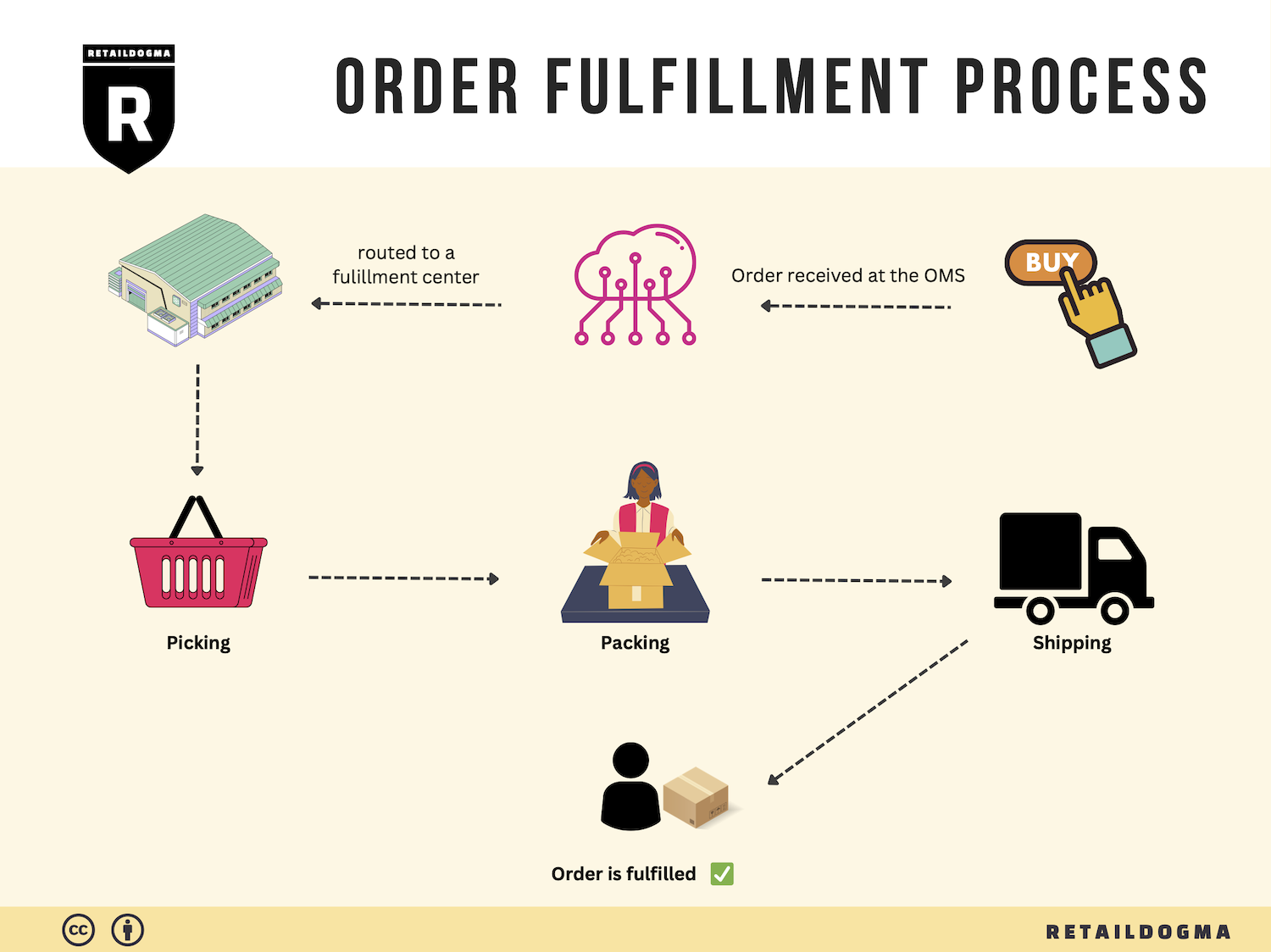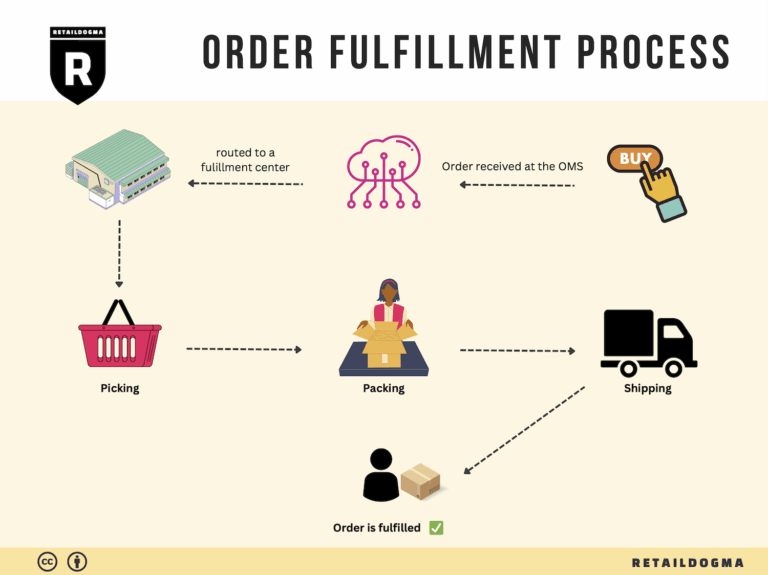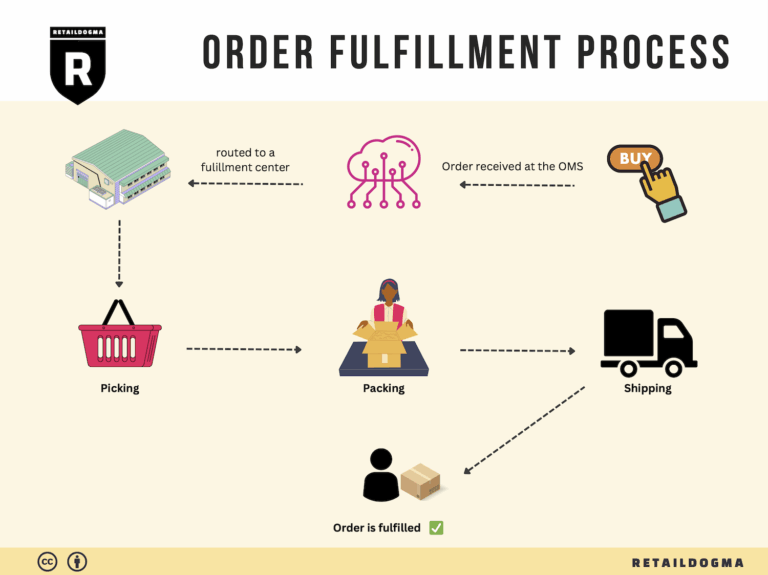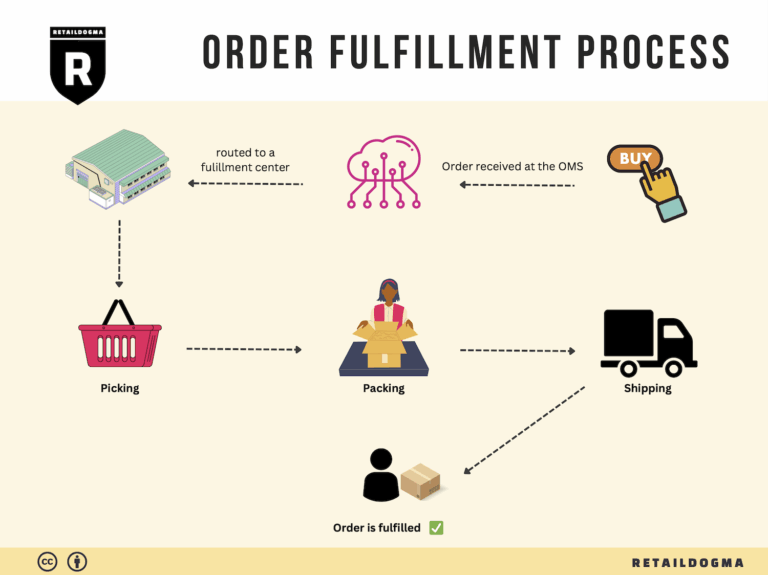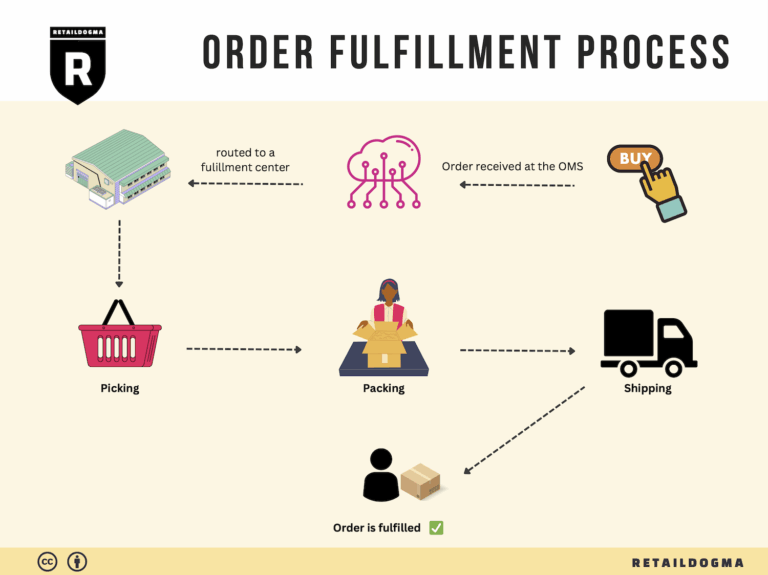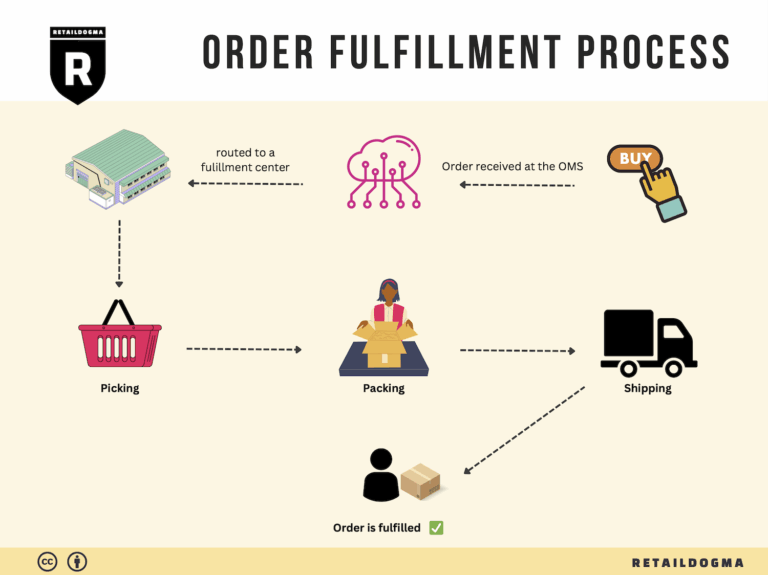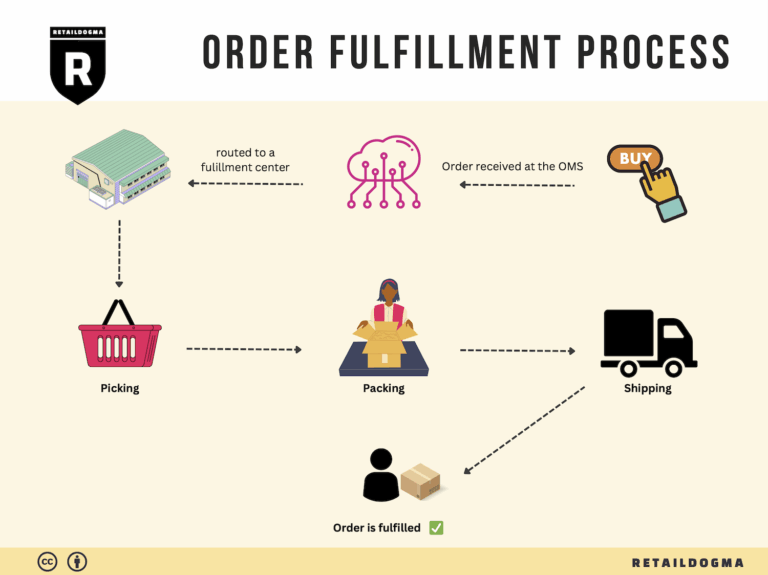How Order Fulfillment Works: A Step-by-Step Guide for Businesses
What is E-commerce Fulfillment? An Introduction for Growing Businesses
Understanding E-commerce Fulfillment
For many growing online businesses, the excitement of scaling operations can quickly turn into overwhelm when it comes to managing the packing and shipping of orders. As sales increase, so do the complexities of ensuring that products reach customers swiftly and accurately. This is where e-commerce fulfillment becomes crucial. Simply put, fulfillment is the process of getting a product from your warehouse to your customer’s doorstep. It encompasses everything from inventory management and order processing to packaging and shipping.
This guide aims to demystify the world of e-commerce fulfillment, providing you with the knowledge needed to navigate this critical aspect of your business effectively. We will explore various fulfillment models, including third-party logistics (3PL) and Fulfillment by Amazon (FBA), helping you understand the advantages and disadvantages of each.
Key Components of Fulfillment
Understanding the core services involved in fulfillment is essential for any e-commerce business looking to scale. These services typically include:
- Inventory Management: Keeping track of stock levels to prevent overselling or stockouts.
- Order Processing: The steps taken from the moment a customer places an order until it is ready to ship.
- Packing: Ensuring that products are securely packaged to prevent damage during transit.
- Shipping: Selecting the best carriers and methods to deliver products efficiently.
Choosing the Right Fulfillment Partner
With numerous fulfillment options available, selecting the right partner is a pivotal decision for your business. Factors to consider include their location, technology capabilities, scalability, customer service, and pricing structures. A well-chosen partner can significantly enhance your operational efficiency and customer satisfaction.
Understanding Pricing Models
Cost is always a key consideration when choosing a fulfillment solution. Pricing models can vary widely, with some providers charging based on the number of orders processed, while others may have flat fees or tiered pricing based on order volume. Understanding these models will help you make informed financial decisions.
Empowering Your Business
Ultimately, this guide is designed to empower e-commerce businesses like yours to make smart, informed decisions about your logistics and fulfillment strategies. By understanding the intricacies of fulfillment, you can streamline your operations, enhance customer satisfaction, and drive growth in your online business. As you navigate through this guide, you will be equipped with the insights necessary to take your fulfillment processes to the next level, ensuring that your business can thrive in today’s competitive e-commerce landscape.
What You’ll Learn In This Guide
- What is E-commerce Fulfillment? An Introduction for Growing Businesses
- The Order Fulfillment Process: From ‘Buy’ Button to Customer’s Door
- Comparing Fulfillment Models: In-House vs. 3PL vs. Dropshipping
- A Deep Dive into Amazon FBA: Pros, Cons, and Who It’s For
- Core Services Offered by Fulfillment Centers
- How to Choose a Fulfillment Partner: A 6-Point Checklist
- Understanding Fulfillment Pricing: A Breakdown of Common Fees
- Frequently Asked Questions (FAQs) about Fulfillment
- Conclusion: Is Outsourcing Fulfillment the Right Move for Your Business?
- Important Disclaimer
The Order Fulfillment Process: From ‘Buy’ Button to Customer’s Door
1. Receiving Inventory
The first step in the order fulfillment process is receiving inventory. This involves the acceptance of products from suppliers or manufacturers into the fulfillment center. Each shipment is meticulously checked against purchase orders to ensure accuracy in quantity and quality. Key terms associated with this stage include SKU (Stock Keeping Unit), which is a unique identifier used to track products.
Why is this step crucial? Accurate receiving is fundamental to maintaining inventory integrity and ensuring that the right products are available for order fulfillment. Mistakes at this stage can lead to stock discrepancies, resulting in delays and customer dissatisfaction. Efficient inventory management systems often utilize barcode scanning technology during this phase to streamline the process and minimize human error.
2. Warehouse Storage
Once the inventory is received, it is stored in the warehouse. This step involves organizing products in designated storage areas, which could include shelves, racks, or bins. Proper organization is vital for efficient retrieval later in the process. FIFO (First In, First Out) is a key term here, referring to a method of inventory rotation that ensures older stock is sold before newer stock.
Why is this important? Effective warehouse storage maximizes space utilization and enhances operational efficiency. By strategically organizing products based on demand or category, businesses can reduce the time spent locating items during order picking. Implementing a robust warehouse management system (WMS) can further optimize storage processes by automating inventory tracking and replenishment.
3. Order Picking
Order picking is the process of retrieving items from storage to fulfill customer orders. This step often involves generating pick lists, which detail the items and quantities required for each order. Warehouse staff or automated systems use these lists to locate and collect products efficiently.
The significance of order picking cannot be overstated. It directly impacts the speed and accuracy of order fulfillment. Errors made during this stage can lead to incorrect shipments, resulting in returns and unhappy customers. Techniques like batch picking or zone picking can enhance efficiency, allowing workers to pick multiple orders simultaneously or focus on specific areas of the warehouse.
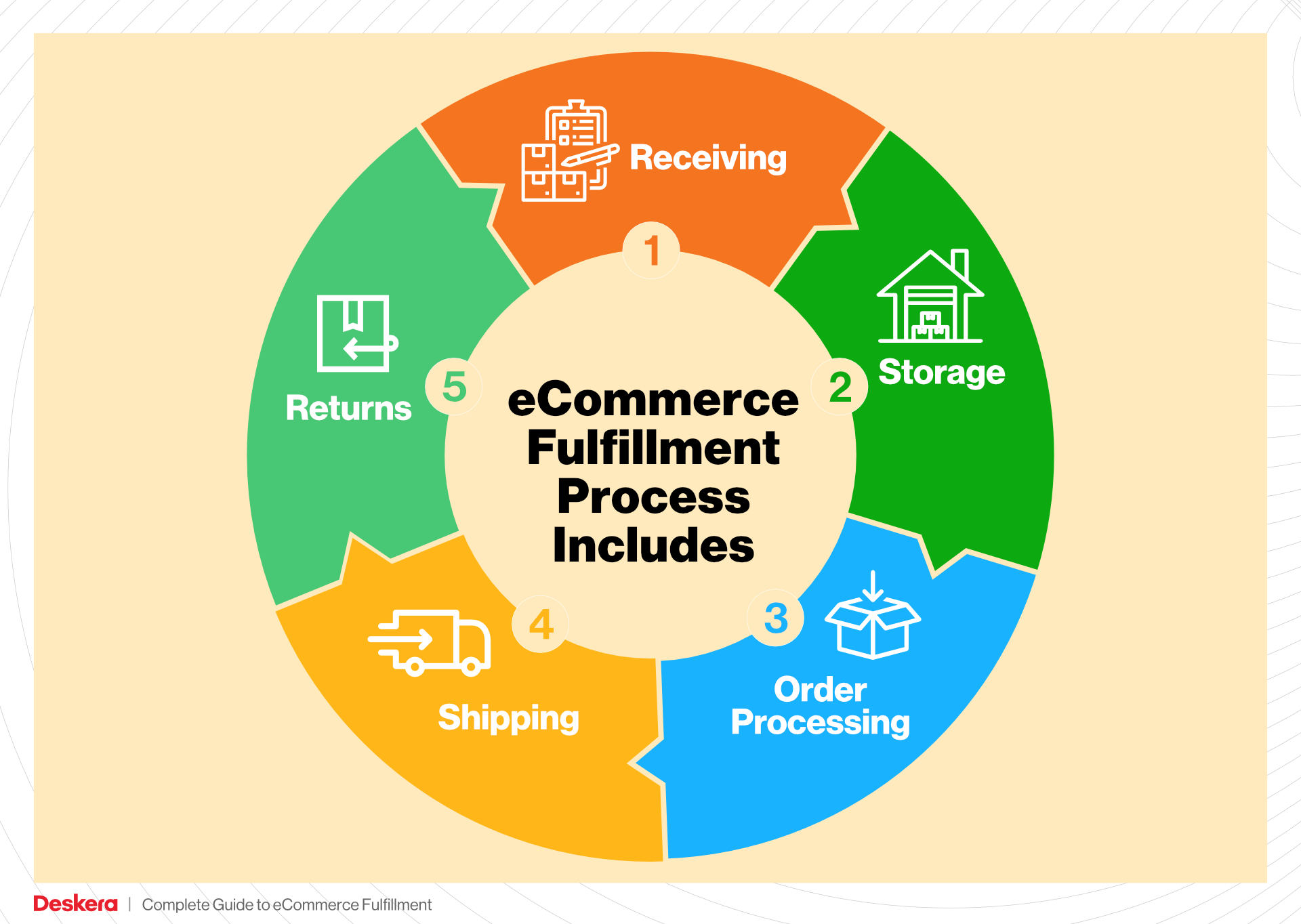
4. Order Packing
After items are picked, they move to the order packing stage. Here, products are carefully packaged for shipping, which involves selecting appropriate materials (boxes, cushioning, etc.) and ensuring that each package is labeled correctly. The concept of dimensional weight pricing is essential in this phase, as carriers often charge based on package size as well as weight.
This step is critical for protecting items during transit and ensuring they arrive in excellent condition. Effective packing minimizes damage and reduces shipping costs by optimizing package dimensions. Additionally, including packing slips and return instructions can enhance the customer experience, making it easier for customers to understand their order details and manage returns if necessary.
5. Shipping & Delivery
The final step in the order fulfillment process is shipping and delivery. Once packages are packed, they are handed over to carriers for transport to the customer’s doorstep. Last-mile delivery is a key term here, referring to the final leg of the delivery journey from the distribution center to the customer.
This stage is vital for customer satisfaction, as timely and reliable delivery directly influences the overall shopping experience. Businesses can enhance their shipping strategies by offering multiple shipping options, tracking capabilities, and clear communication regarding delivery times. Utilizing fulfillment centers like the Amazon Fulfillment Center in Las Vegas, which is strategically located for efficient distribution, can significantly improve delivery speeds and broaden market reach.
In summary, understanding and optimizing each step of the order fulfillment process is essential for e-commerce success. By focusing on accuracy and efficiency at every stage—from receiving inventory to shipping and delivery—businesses can enhance customer satisfaction, reduce operational costs, and ultimately scale their logistics effectively.
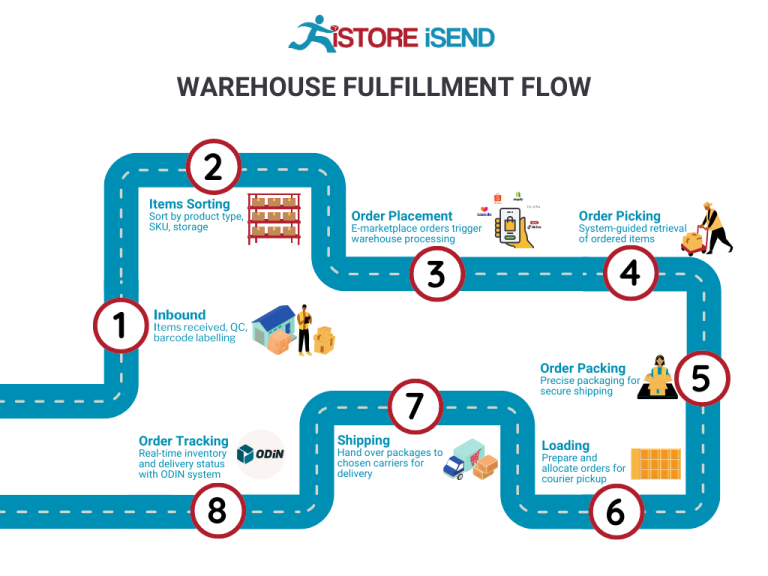
Comparing Fulfillment Models: In-House vs. 3PL vs. Dropshipping
Fulfillment Model Comparison Table
| Model | Who Handles Inventory | Best For (Business Stage) | Key Advantage | Key Disadvantage |
|---|---|---|---|---|
| In-House Fulfillment | Business Owner | Established businesses with stable sales | Full control over inventory and processes | High overhead costs and labor management |
| Third-Party Logistics (3PL) | 3PL Provider | Growing businesses or those scaling quickly | Cost-effective and scalable logistics solutions | Less control over inventory and service quality |
| Dropshipping | Supplier | Startups and small businesses | Low upfront investment and minimal risk | Lower profit margins and reliance on suppliers |
In-House Fulfillment
In-house fulfillment refers to the process where a business manages its own inventory and order fulfillment operations. This model is most suitable for established companies that have a consistent sales volume and can afford the necessary infrastructure. By maintaining control over inventory, businesses can ensure quality and streamline their processes according to specific operational needs. This model allows for direct oversight of warehousing, packing, and shipping, which can enhance customer satisfaction through faster and more reliable service. However, the downside is that in-house fulfillment typically incurs higher overhead costs, including warehousing, labor, and equipment. Additionally, managing logistics requires significant time and resources, which can detract from other critical business functions, such as marketing and product development.
Third-Party Logistics (3PL)
Third-party logistics (3PL) involves outsourcing fulfillment operations to a specialized logistics provider. This model is ideal for growing businesses or those looking to scale quickly without investing heavily in their own logistics infrastructure. 3PL providers can offer a range of services, including warehousing, order processing, and shipping, allowing businesses to focus on core activities like sales and product development. The key advantage of this model is cost-effectiveness; businesses can benefit from the economies of scale that 3PLs provide, often achieving lower shipping rates and faster delivery times. However, one of the main disadvantages is that businesses relinquish some control over their inventory and fulfillment processes, which can lead to inconsistencies in service quality if the 3PL provider does not meet expectations. Effective communication and a strong partnership with the 3PL are essential to mitigate these risks.
Dropshipping
Dropshipping is a fulfillment model where retailers sell products without holding any inventory. Instead, when a customer places an order, the retailer purchases the item from a third-party supplier who then ships it directly to the customer. This model is particularly suited for startups and small businesses with limited budgets, as it requires minimal upfront investment and reduces the risk associated with unsold inventory. Since businesses do not have to manage inventory or fulfillment logistics, they can focus on marketing and customer engagement. However, dropshipping comes with its own set of challenges. Profit margins are often lower due to the reliance on suppliers, and businesses have limited control over product quality, shipping times, and customer service. This can lead to customer dissatisfaction if the supplier fails to meet expectations. To succeed in dropshipping, it’s crucial to choose reliable suppliers and maintain open lines of communication with customers regarding their orders.
Conclusion
Each fulfillment model—In-House, 3PL, and Dropshipping—has its own unique advantages and disadvantages, making them suitable for different business stages and operational strategies. E-commerce business owners and entrepreneurs must evaluate their specific needs, resources, and growth ambitions when deciding which model to implement. In-house fulfillment offers control and customization but at a higher cost; 3PL provides scalability and cost savings but may sacrifice some control; and dropshipping minimizes risk and investment but can lead to lower profits and quality issues. By carefully considering these factors, businesses can choose the fulfillment model that aligns best with their goals and operational capabilities, ultimately leading to enhanced efficiency and customer satisfaction.
A Deep Dive into Amazon FBA: Pros, Cons, and Who It’s For
Understanding Fulfillment by Amazon (FBA)
Fulfillment by Amazon (FBA) is a service provided by Amazon that allows sellers to store their products in Amazon’s fulfillment centers. Amazon takes care of storage, packaging, and shipping, as well as handling customer service and returns. This service is particularly appealing for e-commerce businesses looking to scale quickly and efficiently.
How FBA Works
-
Product Listing and Inventory Management: Sellers create product listings on Amazon and ship their inventory to Amazon’s fulfillment centers. Once the products are received, they are stored in Amazon’s warehouses.
-
Order Processing: When a customer places an order, Amazon picks, packs, and ships the product directly to the customer. This process is highly automated and leverages Amazon’s sophisticated logistics network.
-
Customer Service: Amazon handles all customer inquiries, returns, and refunds related to FBA products, allowing sellers to focus on other aspects of their business.
-
Reporting and Analytics: FBA provides sellers with access to various reports and analytics that help track sales, inventory levels, and customer feedback, enabling data-driven decision-making.
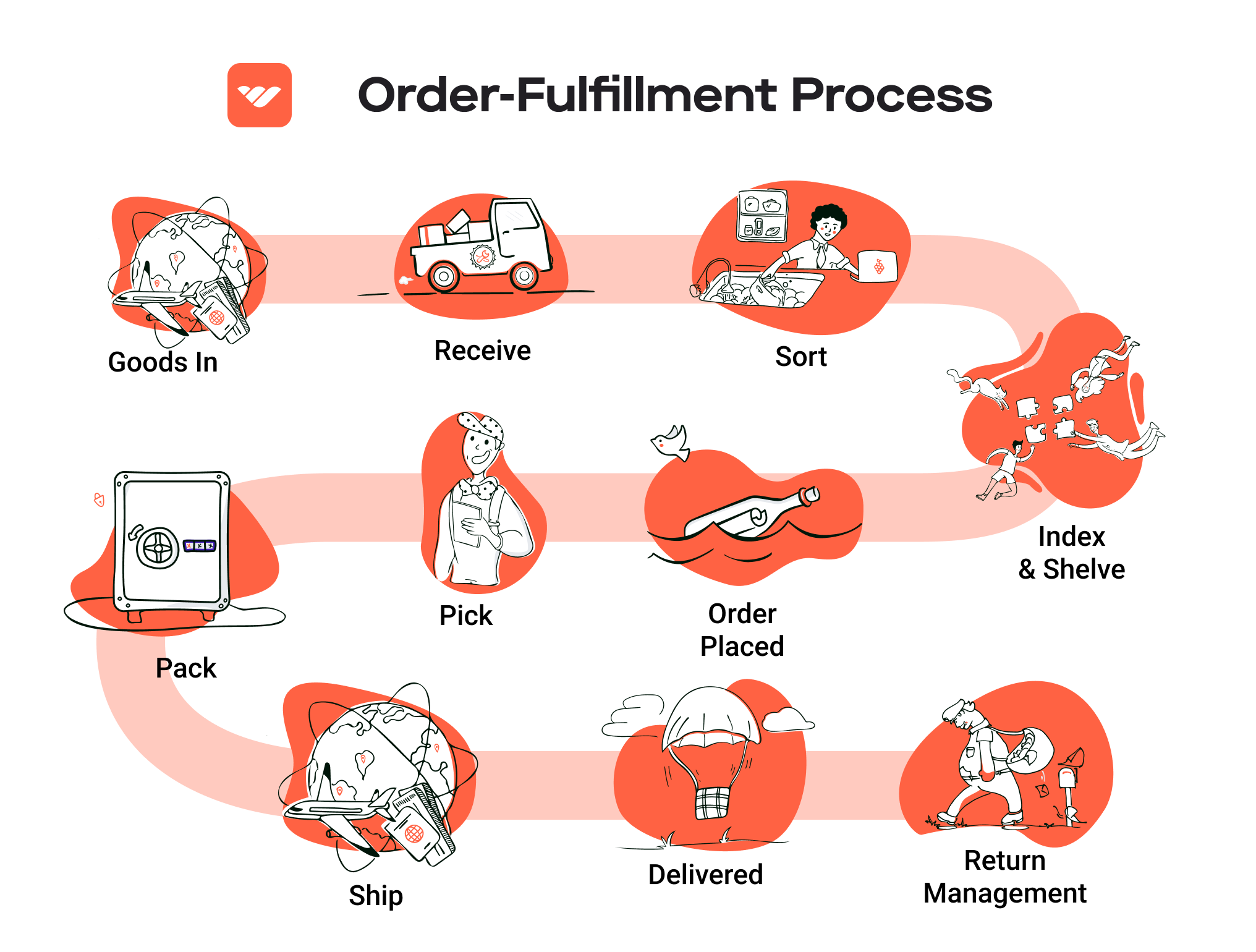
Pros of FBA
1. Prime Eligibility
One of the most significant advantages of using FBA is that products become eligible for Amazon Prime. This means that Prime members can receive their orders with free two-day shipping, which significantly increases the likelihood of sales. Prime customers tend to prefer products that are eligible for Prime shipping, as it enhances their shopping experience.
2. Customer Trust
Products fulfilled by Amazon benefit from the trust associated with the Amazon brand. Customers are more likely to purchase from sellers using FBA due to Amazon’s reputation for reliability and customer service. This trust can lead to higher conversion rates and repeat customers.
3. Multi-Channel Fulfillment
FBA isn’t limited to just Amazon sales. Sellers can use FBA to fulfill orders from other sales channels, such as their own websites or other e-commerce platforms. This flexibility allows sellers to streamline their logistics and maintain inventory in one location while reaching customers across multiple platforms.
4. Scalability
FBA provides a scalable solution for businesses looking to grow. As sales increase, sellers can send more inventory to Amazon without needing to invest in their own warehousing and fulfillment infrastructure. This allows for rapid expansion without the typical logistical headaches.
5. Time Savings
By outsourcing fulfillment to Amazon, sellers can save time and resources. This allows them to focus on product development, marketing, and other critical business activities rather than managing logistics and order fulfillment.
Cons of FBA
1. High Fees
FBA comes with various fees, including storage fees, fulfillment fees, and additional charges for long-term storage. For small businesses or those with low margins, these fees can eat into profits. Sellers need to carefully calculate these costs to ensure they remain profitable.
2. Strict Inventory Rules
Amazon has strict inventory management policies, including guidelines on product condition, labeling, and packaging. Sellers must adhere to these rules, or they risk having their inventory returned or disposed of. This can add complexity to inventory management.
3. Commingling Risks
With FBA, products from different sellers may be stored in the same location, which can lead to commingling. If a customer receives a product that is defective or not as described, it can negatively impact the seller’s reputation, even if the issue originated from another seller’s inventory.
4. Less Control Over Fulfillment
Sellers relinquish control over the fulfillment process when they opt for FBA. This means they cannot directly manage how their products are packaged or shipped, which may not align with their brand’s standards or customer expectations.
5. Limited Customization
FBA has limited options for customizing the packaging and branding of products. Sellers who prioritize a unique unboxing experience may find FBA’s standard packaging to be a limitation.
Who is FBA Best For?
Fulfillment by Amazon is particularly well-suited for:
-
Small to Medium-Sized Businesses: Businesses that lack the infrastructure for in-house fulfillment can benefit from FBA’s streamlined services.
-
E-commerce Brands Seeking Rapid Growth: Companies looking to scale quickly and efficiently can leverage Amazon’s logistics to reach a broader audience without the burden of managing fulfillment.
-
Sellers with High Inventory Turnover: Businesses that sell products with a fast turnover rate can maximize the benefits of FBA, as the storage and fulfillment fees become more manageable relative to sales volume.
-
Brands Focused on Customer Experience: Companies that want to enhance customer trust and experience through Amazon’s reliable shipping and customer service will find FBA advantageous.
-
Multi-Channel Sellers: Those who sell across various platforms and want to streamline their fulfillment processes can benefit from FBA’s multi-channel fulfillment capabilities.
In conclusion, while Fulfillment by Amazon offers a powerful tool for e-commerce sellers to streamline logistics and enhance customer satisfaction, it’s essential to weigh the pros and cons carefully. By understanding how FBA works and identifying whether it aligns with your business model, you can make an informed decision on whether to integrate this service into your operations.
Core Services Offered by Fulfillment Centers
Inventory Management & Warehousing
Inventory management and warehousing are foundational services provided by fulfillment centers. This involves storing products in a secure and organized manner, allowing businesses to maintain optimal stock levels while minimizing overhead costs. Fulfillment centers utilize sophisticated inventory management systems that track stock levels in real-time, providing e-commerce businesses with valuable insights into product availability and demand trends.
Benefits:
1. Space Optimization: By outsourcing warehousing to a fulfillment center, e-commerce businesses can save on real estate costs associated with owning or leasing warehouse space. This is especially important for startups and small businesses looking to scale without heavy upfront investments.
-
Scalability: As demand fluctuates, fulfillment centers allow businesses to easily scale their inventory up or down. This flexibility is crucial for managing seasonal spikes in sales or product launches.
-
Reduced Risk: Effective inventory management reduces the risk of overstocking or stockouts, ensuring that businesses can meet customer demand without tying up capital in unsold goods.
Pick and Pack Services
Pick and pack services are integral to the fulfillment process. This service involves selecting items from the warehouse based on customer orders and packing them efficiently for shipment. Fulfillment centers employ trained staff and advanced technology to ensure accuracy and speed in this process.
Benefits:
1. Speed and Efficiency: Fulfillment centers are equipped with optimized workflows and technology that allow for rapid order processing. This leads to quicker turnaround times for orders, significantly enhancing customer satisfaction.
-
Accuracy: The use of barcode scanning and automated systems minimizes errors during the picking process. Accurate order fulfillment reduces the likelihood of returns due to incorrect shipments, which can be costly for e-commerce businesses.
-
Customized Packaging: Many fulfillment centers offer customizable packaging options, allowing businesses to enhance their brand experience. This can include branded boxes, inserts, and other marketing materials that create a memorable unboxing experience for customers.
Kitting and Assembly
Kitting and assembly services involve grouping multiple products into a single package or preparing items for sale. This service is particularly beneficial for e-commerce businesses that offer bundled products, promotional kits, or items that require assembly before shipping.
Benefits:
1. Enhanced Product Offerings: By offering kits or bundled products, businesses can increase their average order value and provide customers with more attractive purchasing options. This can lead to higher sales and improved customer loyalty.
-
Time Savings: Outsourcing kitting and assembly to a fulfillment center frees up valuable time for e-commerce businesses. This allows them to focus on core activities such as marketing, product development, and customer service rather than labor-intensive preparation tasks.
-
Quality Control: Fulfillment centers typically implement quality control measures during the kitting process, ensuring that all components are included and meet the required standards before shipment. This enhances the overall customer experience and reduces the chances of returns.
Returns Management (Reverse Logistics)
Returns management, often referred to as reverse logistics, is a critical service offered by fulfillment centers. This involves the handling of returned merchandise, including processing, restocking, and managing customer communications regarding returns.
Benefits:
1. Streamlined Process: A well-managed returns process minimizes the hassle for both the business and the customer. Fulfillment centers often have established procedures for handling returns efficiently, ensuring that items are processed quickly and accurately.
-
Customer Satisfaction: A smooth returns process can significantly enhance customer satisfaction. When customers know that returns are easy and straightforward, they are more likely to make purchases, knowing they have options if the product doesn’t meet their expectations.
-
Data Insights: Returns management provides valuable data on customer preferences and product performance. By analyzing return reasons, e-commerce businesses can identify trends, improve product quality, and make informed decisions about inventory management and future product offerings.
Conclusion
In summary, the core services offered by fulfillment centers are crucial for e-commerce businesses looking to streamline operations, enhance customer satisfaction, and ultimately scale their sales. From efficient inventory management and accurate pick and pack services to value-added kitting and effective returns management, partnering with a fulfillment center can provide the necessary infrastructure and expertise to navigate the complexities of modern logistics. By leveraging these services, businesses can focus on growth and innovation, while ensuring that their customers receive timely and accurate deliveries.
How to Choose a Fulfillment Partner: A 6-Point Checklist
Location & Warehouse Network
The geographical location of your fulfillment partner is critical to your logistics strategy. A partner situated close to your customer base can significantly reduce shipping times and costs, enhancing customer satisfaction.
Why It Matters:
– Shipping Efficiency: Proximity to major markets enables faster delivery times, which is crucial for maintaining a competitive edge.
– Cost-Effectiveness: Reducing the distance products need to travel can lower shipping costs, directly impacting your bottom line.
Questions to Ask:
1. Where are your warehouses located, and how does that align with my target markets?
2. Do you have multiple locations to ensure wider coverage?
3. What are your average shipping times to key regions, especially my primary customer areas?
Technology & Integrations
In today’s e-commerce landscape, the ability to seamlessly integrate with your existing technology stack is vital. A fulfillment partner should offer robust technology solutions that enhance operational efficiency.
Why It Matters:
– Real-Time Tracking: Advanced tracking systems allow both you and your customers to monitor shipments in real time.
– Inventory Management: Integrations with your e-commerce platform can automate inventory updates, preventing stockouts and overstock situations.
Questions to Ask:
1. What technology platforms do you use for order management and tracking?
2. Can your system integrate with my existing e-commerce platform (e.g., Shopify, WooCommerce)?
3. Do you offer any APIs for custom integrations?
Specializations (e.g., Cold Storage, Oversized Items)
Depending on the nature of your products, you may require specific capabilities from your fulfillment partner. This can include cold storage for perishables or special handling for oversized items.
Why It Matters:
– Product Suitability: Ensuring that your fulfillment partner can handle your specific product types is essential for compliance and quality assurance.
– Operational Efficiency: Specialized facilities can streamline processes, reducing the risk of damage or spoilage.
Questions to Ask:
1. Do you have facilities equipped to handle my specific product needs (e.g., temperature control, oversized items)?
2. What measures do you have in place to ensure product safety and compliance?
3. Can you accommodate seasonal fluctuations in demand for specialized items?
Scalability & Capacity
As your business grows, your fulfillment needs will likely change. A suitable partner should be able to scale operations in line with your growth.
Why It Matters:
– Flexibility: A partner with ample capacity can accommodate sudden spikes in order volume, such as during peak shopping seasons.
– Long-Term Partnership: Scalability ensures you won’t need to switch partners as your business expands, maintaining continuity in your operations.
Questions to Ask:
1. What is your current capacity, and how do you handle peak seasons?
2. Can you provide examples of how you have scaled for other clients?
3. What are your policies for increasing storage and handling capacity?
Pricing and Contracts
Understanding the pricing structure and contract terms of your fulfillment partner is crucial for budgeting and financial planning.
Why It Matters:
– Cost Transparency: Knowing all potential costs upfront can prevent unexpected expenses that could derail your budget.
– Contract Flexibility: Clear and flexible contract terms can provide peace of mind and allow for adjustments as your business needs evolve.
Questions to Ask:
1. What are your pricing models (e.g., per order, per item, monthly storage fees)?
2. Are there any hidden fees I should be aware of (e.g., for returns, special handling)?
3. What are the terms of your contract, and can they be adjusted as my business needs change?
Customer Support & Reviews
Effective customer support can be a differentiator when choosing a fulfillment partner. A responsive and knowledgeable support team can help resolve issues quickly and efficiently.
Why It Matters:
– Problem Resolution: Quick access to support can minimize disruptions in your supply chain.
– Reputation and Reliability: Customer reviews and testimonials can provide insights into the fulfillment partner’s reliability and service quality.
Questions to Ask:
1. What support channels do you offer (e.g., phone, email, chat)?
2. What is your average response time for customer inquiries?
3. Can you provide references or case studies from current clients?
Conclusion
Choosing the right fulfillment partner is a pivotal decision for your e-commerce business. By considering these six key areas—location, technology, specialization, scalability, pricing, and customer support—you can make a well-informed choice that aligns with your business goals. Each question posed in this checklist is designed to guide you in evaluating potential partners, ensuring that you select a fulfillment provider capable of supporting your growth and delivering exceptional service to your customers.
Understanding Fulfillment Pricing: A Breakdown of Common Fees
Initial Setup Fees
Initial setup fees are one-time charges incurred when you first establish a relationship with a fulfillment center. These fees can vary significantly based on the complexity of your requirements and the services offered by the fulfillment provider. Common components of setup fees may include:
- Account Setup: This fee covers the administration of creating your account and setting up the necessary technology integrations.
- Software Integration: If your e-commerce platform requires integration with the fulfillment center’s software, this may incur additional costs.
- Custom Packaging Solutions: If you need specific packaging materials or branding, there may be additional charges for sourcing and customizing these options.
These fees are typically calculated as a flat rate, but it’s essential to inquire about any potential variable costs that may arise based on your specific needs.
Receiving Fees
Receiving fees are charged for the process of accepting and inspecting your inventory upon arrival at the fulfillment center. This fee typically covers:
- Unloading Goods: The labor and equipment necessary to unload your products from delivery trucks.
- Quality Control: Checking for damages or discrepancies in the shipment against the purchase order.
- Inventory Entry: Entering your products into the warehouse management system (WMS) to ensure accurate tracking.
Receiving fees are usually calculated on a per-pallet or per-sku basis, meaning that the more inventory you send, the higher the total receiving fee will be. Understanding how your products will be received and processed can help you budget accordingly.
Storage Fees (per pallet/bin)
Storage fees are ongoing charges for keeping your inventory in the fulfillment center. These fees can be structured in several ways:
- Per Pallet: This is a common method where you are charged a monthly fee for each pallet of goods stored.
- Per Bin: Some facilities charge based on the space occupied by your products in bins or shelves.
Storage fees can vary based on the location of the fulfillment center and the size of your inventory. It’s crucial to monitor your inventory levels to avoid excessive storage fees, especially during peak seasons when holding costs can escalate.
Pick & Pack Fees (per item/order)
Pick and pack fees are incurred each time an order is fulfilled. This process involves selecting the ordered items from the warehouse and packing them for shipment. The calculation of these fees can depend on several factors:
- Per Item: Many fulfillment centers charge a fee for each item picked from the shelf, which can add up quickly if you have a large variety of products.
- Per Order: Some providers may offer a flat fee per order, regardless of the number of items included.
- Special Handling: Additional charges may apply if your items require special handling, such as fragile items or complex packing requirements.
Understanding how your fulfillment center structures its pick and pack fees is essential for estimating the total cost of order fulfillment.
Shipping Fees
Shipping fees encompass the costs associated with transporting your packages to customers. These fees can vary widely based on several factors:
- Shipping Carrier: Different carriers have different pricing structures, which can impact your overall shipping costs.
- Destination: Shipping costs are often calculated based on the distance to the delivery location and whether the package is going to a residential or commercial address.
- Package Weight and Dimensions: Heavier and larger packages generally incur higher shipping fees.
To optimize shipping costs, consider negotiating rates with carriers or utilizing services that offer discounted shipping rates for e-commerce businesses.
Conclusion: Tips for Getting an Accurate Quote
To ensure you receive an accurate quote from fulfillment centers, consider the following tips:
- Be Transparent About Your Needs: Clearly outline your inventory types, expected order volumes, and any specific handling requirements.
- Request Detailed Breakdown: Ask for a detailed quote that includes all potential fees, not just the base rates. This will help you understand the total cost structure.
- Compare Multiple Providers: Get quotes from several fulfillment centers to compare pricing structures and services offered.
- Inquire About Hidden Fees: Ask about any additional fees that may apply, such as for returns, inventory audits, or seasonal surcharges.
- Negotiate Terms: Don’t hesitate to negotiate terms and rates, especially if you have a high volume of business, as many fulfillment centers are willing to offer discounts for long-term contracts or bulk orders.
By taking these steps, you can better navigate fulfillment pricing and make informed decisions that align with your business goals.
Frequently Asked Questions (FAQs) about Fulfillment
1. What is the Amazon Fulfillment Center in Las Vegas, NV?
The Amazon Fulfillment Center in Las Vegas, located at 5801 Nicco Way, is a large-scale warehouse facility that specializes in the storage, packing, and shipping of a wide range of products for Amazon. It plays a crucial role in ensuring timely delivery to customers across the region, contributing to Amazon’s commitment to fast and reliable logistics.
2. How does Amazon’s fulfillment process work?
Amazon’s fulfillment process involves receiving products, storing them in the fulfillment center, picking them for orders, packing them securely, and then shipping them to customers. Advanced technology, including robotics and sophisticated inventory management systems, enhances efficiency and accuracy throughout the process.
3. What are the advantages of using the Las Vegas Fulfillment Center?
The Las Vegas Fulfillment Center offers strategic advantages such as proximity to major shipping routes, including Interstates 15 and 215, allowing for quick distribution across the West Coast. This location enables businesses to provide next-day delivery to a large customer base, particularly in California, enhancing customer satisfaction and competitive edge.
4. What’s the difference between a warehouse and a fulfillment center?
A warehouse primarily focuses on storing goods, while a fulfillment center is designed to handle the entire process of order fulfillment, including inventory management, packing, and shipping. Fulfillment centers are equipped with technology and processes aimed at optimizing order processing speed and accuracy.
5. What is a Third-Party Logistics Provider (3PL)?
A Third-Party Logistics Provider (3PL) is a service provider that manages logistics operations for businesses. This includes warehousing, inventory management, order fulfillment, and transportation services. Partnering with a 3PL can help businesses scale their logistics operations without the overhead costs of maintaining their own fulfillment infrastructure.
6. How much do fulfillment services cost?
Fulfillment service costs can vary significantly based on factors such as order volume, storage needs, and shipping methods. Typically, businesses can expect to pay for storage space, picking and packing fees, and shipping costs. It’s advisable to request quotes from multiple providers to find a service that fits your budget and operational needs.
7. What types of products can be stored at the Amazon Fulfillment Center in Las Vegas?
The Amazon Fulfillment Center can handle a wide range of products, from consumer electronics to clothing and household goods. However, there are restrictions on certain items that may require special handling or storage conditions, such as perishable goods or hazardous materials.
8. How does Amazon ensure fast shipping from the Las Vegas Fulfillment Center?
Amazon leverages advanced logistics technology, including automated systems and a vast network of fulfillment centers, to streamline the shipping process. The Las Vegas center is strategically located to facilitate quick access to major highways and shipping routes, enabling efficient distribution across the region.
9. Can small businesses use the Amazon Fulfillment Center for their products?
Yes, small businesses can utilize the Amazon Fulfillment Center through the Fulfillment by Amazon (FBA) program. This allows them to store their products in Amazon’s facilities and leverage Amazon’s logistics network for shipping, enabling them to offer competitive shipping options without the overhead costs of managing their own fulfillment operations.
10. What sustainable practices are implemented at the Las Vegas Fulfillment Center?
The Las Vegas Fulfillment Center is committed to sustainable practices, including the use of energy-efficient technologies and solar power installations. Initiatives like these aim to reduce the environmental impact of operations while supporting Amazon’s broader sustainability goals.
Conclusion: Is Outsourcing Fulfillment the Right Move for Your Business?
Evaluating the Benefits of Outsourcing Fulfillment
Outsourcing fulfillment can be a transformative decision for e-commerce businesses looking to scale efficiently. By leveraging a fulfillment service, companies can save significant time and resources that would otherwise be spent on inventory management, packing, and shipping. This enables business owners and operations managers to focus on core competencies such as product development, marketing, and customer engagement.
Scalability is another critical advantage of partnering with a fulfillment service. As your order volume increases, a dedicated fulfillment center can adjust quickly to meet demand without the need for costly investments in infrastructure or personnel. For instance, Amazon’s fulfillment centers, like those in Las Vegas, are designed to handle high volumes with advanced technology and streamlined processes, ensuring that businesses can keep pace with market trends and customer expectations.
Moreover, fulfillment partners bring expertise that can significantly enhance operational efficiency. They are equipped with the latest logistics technology and best practices that improve accuracy and speed. This expertise is vital in today’s fast-paced e-commerce environment, where customer satisfaction hinges on timely deliveries and seamless order processing.
Choosing the Right Partner for Growth
However, the benefits of outsourcing fulfillment hinge on selecting the right partner. Evaluate potential fulfillment centers based on their location, technology capabilities, and customer service. A partner that aligns with your business goals can facilitate growth and improve your competitive edge.
Take Action
As you contemplate the future of your logistics strategy, consider conducting an audit of your current shipping processes. Identify bottlenecks, inefficiencies, and areas where a fulfillment partner could add value. This strategic evaluation will empower you to make informed decisions about whether outsourcing fulfillment is the next step in your growth journey. Embrace the opportunity to enhance your operations and meet your customers’ needs more effectively.
Important Disclaimer
⚠️ Important Disclaimer
The information in this guide is for educational purposes. Fulfillment services, pricing, and platform features change frequently. Always conduct your own due diligence and consult with providers directly before making business decisions.
